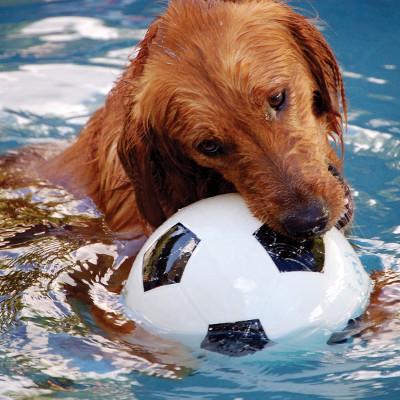By Elizabeth Wasserman for The Dog Daily
 The old saying "the dog days of summer" wasn't coined for nothing. The phrase actually stems from the stars, as Sirius, the "Dog Star," rises in conjunction with the sun between July and August. Some of our ancestors believed that the brightness of the sun and star combined to cause summer's extreme heat.
The old saying "the dog days of summer" wasn't coined for nothing. The phrase actually stems from the stars, as Sirius, the "Dog Star," rises in conjunction with the sun between July and August. Some of our ancestors believed that the brightness of the sun and star combined to cause summer's extreme heat.
Over the years, however, we've come to use the expression for sweltering days that aren't fit for any dog. The truth is that dogs are more susceptible to the summer heat than we are. They have to wear a fur coat all year round. Whereas we can sweat to cool ourselves down, our pups sweat only through glands on the nose and paws and try to release heat by panting.
"They can't cool themselves off like humans," says Kelly Connolly, an issues specialist with the Human Society of the United States. "They can't roll down the windows of a car or turn on the air conditioning. It's up to humans to make sure that their dogs are comfortable enough and that they can live healthily in the summer heat."
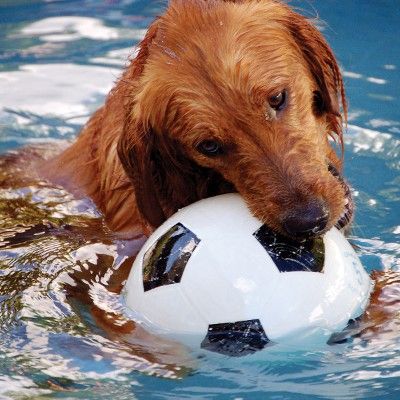 As global warming brings more extreme temperatures to all corners of the planet, it's important for pet owners to do what they can to keep their furry friends cool and recognize signs of discomfort. Veterinarians say signs of overheating include panting hard. But heat stroke symptoms can include a staggered gait, rapid heartbeat, listlessness, restlessness, vomiting and a darkening of the gums and tongue.
As global warming brings more extreme temperatures to all corners of the planet, it's important for pet owners to do what they can to keep their furry friends cool and recognize signs of discomfort. Veterinarians say signs of overheating include panting hard. But heat stroke symptoms can include a staggered gait, rapid heartbeat, listlessness, restlessness, vomiting and a darkening of the gums and tongue.
If your dog's bodily temperature rises above the normal range of up to 102.5 degrees Fahrenheit, it may be time to take the dog to a veterinarian or animal hospital, says April Guest, DVM, of the Meyerland Animal Clinic, near Houston.
Summer Don’ts There are several summer hazards pet owners should be aware of. Here are five things you should never do with your dog:
-
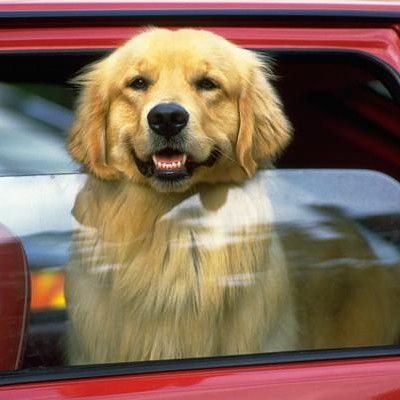 Don't leave your dog in a parked car. Even with the window cracked, temperatures can rise up to 30 degrees in the space of a few minutes, says Connolly. "Pets are in danger of heat stroke when the indoor temperature reaches 110 degrees," she says. "Even when it's 70 degrees outside, it is going to be suffocating in a quick amount of time in that car."
Don't leave your dog in a parked car. Even with the window cracked, temperatures can rise up to 30 degrees in the space of a few minutes, says Connolly. "Pets are in danger of heat stroke when the indoor temperature reaches 110 degrees," she says. "Even when it's 70 degrees outside, it is going to be suffocating in a quick amount of time in that car."
- Don't tie your dog up outside in the blazing sun. Our canine pals need an escape during sunny summer months, so if you plan to let your pet outside, make sure that it can find shelter under a tree shade, a porch or other structure. The heat is not only a danger to your dog, but your pet can also become sunburned if it’s a thin-coated or wire-haired breed.
- Don't put sunscreen made for humans on your pooch. Chemicals in some sunscreens can be harmful if pets ingest them, says Dr. Guest. What dog won't try to lick off the gooey white substance if given the option? Pet stores sell sunscreens formulated especially for dogs.
-
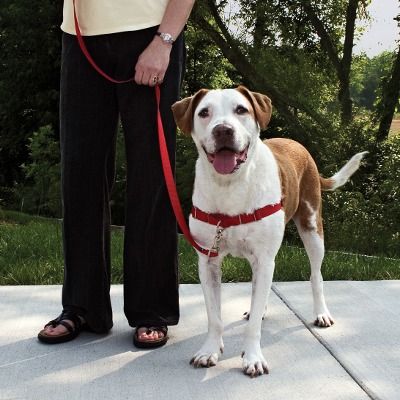 Don't exercise your pup under the midday sun. Chasing sticks or a Frisbee, or even a long walk, can put extra strain on a dog during peak sun times. "The heat of the day can take a toll particularly on dogs who are overweight, older or who have certain diseases," Dr. Guest says.
Don't exercise your pup under the midday sun. Chasing sticks or a Frisbee, or even a long walk, can put extra strain on a dog during peak sun times. "The heat of the day can take a toll particularly on dogs who are overweight, older or who have certain diseases," Dr. Guest says.
- Don't walk your dog on asphalt unless you test the temperature. A dog's paw pads are susceptible to burns, says Elaine Acker, CEO of Pets America, a nonprofit animal rescue organization. "Slip off your shoes and stand on the pavement with bare feet first," she advises. "If it's not comfortable for you, it's not going to be comfortable for your dog either."
Tips for Keeping Your Dog Cool
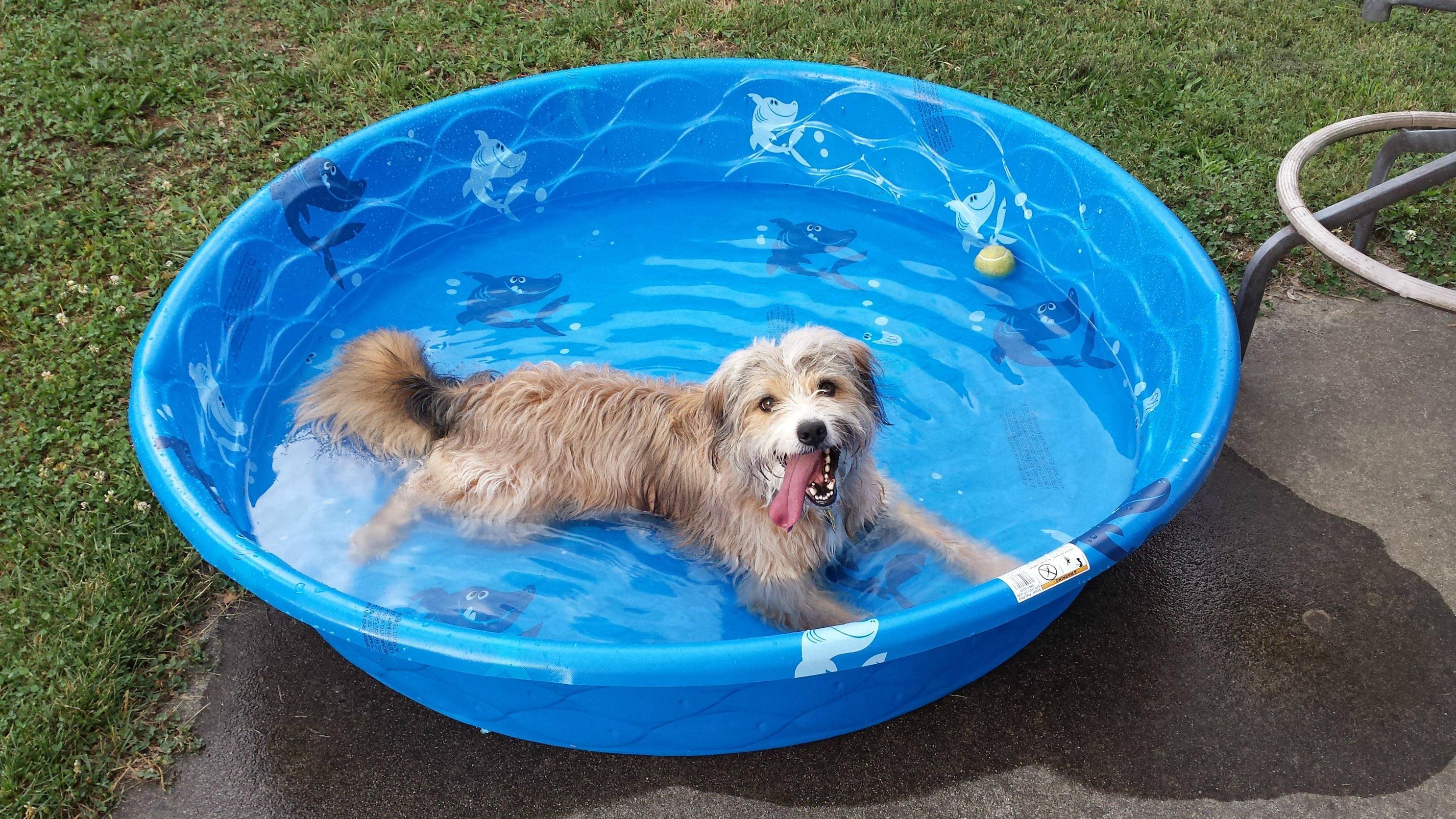 Cool: Put warm -- never cold -- water on your pup's paws to help them cool down.
Cool: Put warm -- never cold -- water on your pup's paws to help them cool down.
Cooler: Try rubbing alcohol instead of water, which will cool as it evaporates from your pet's pads.
Cool: Turn on a sprinkler outside for your dog to run through.
Cooler: Buy a $5 plastic kiddie pool for your pup. Place it in the shade and fill it with a few inches of water for splashing and fun.
Cool: Brush your dog's coat to get the knots out and add a bit of water to help cool your pet. This will happen as the water evaporates.
Cooler: Schedule a grooming session or a shave for long-coated dogs or those with a heavy undercoat.
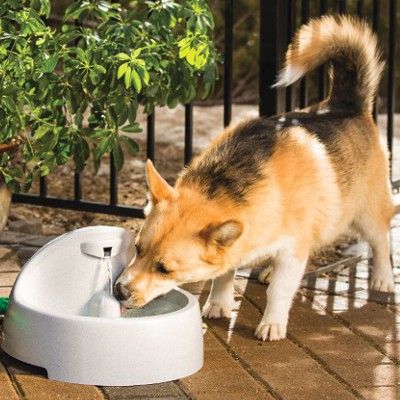 Cool: Fill your dog's bowl regularly with cool water.
Cool: Fill your dog's bowl regularly with cool water.
Cooler: Toss a few ice cubes in the water bowl so your canine has something cool to gnaw on.
Cool: Set up an old beach umbrella in the yard for your dog to lie under.
Cooler: Buy a well-ventilated doghouse and keep it in the shade. Some pet stores now sell misters that attach to a doghouse and spray water throughout the day.
Cool: Plug in a portable electric fan and aim it toward your pet.
Cooler: Fill a spray bottle with water and gently mist your dog. Some may try to playfully bite the spray or stream.
Cool: Encourage your pet to lie down indoors on a tile floor, such as in a bathroom or kitchen. Ceramic tiles stay cooler than wood floors or carpet.
Cooler: Wet a towel for your dog to lie down on and place it on a surface that stays cool in the shade, like concrete, marble or tile.
 Cool: Take a cool, wet towel and wipe down your dog.
Cool: Take a cool, wet towel and wipe down your dog.
Cooler: Take a cool, wet towel and wipe the inside of your pup's ears. Body heat is dispersed in the capillaries that line your dog’s ears, making coolness there especially important. Make sure to wring out the towel first because pooled water can lead to ear infections.
Cool: If your dog will be outside for part of the day, provide a large bowl for water that can't be tipped over, leaving your dog without it.
Cooler: Place that large bowl of water under a slowly dripping spigot to constantly replenish the supply with cooler H2O.
Cool: Instead of playing outside in the heat, toss a ball for your dog indoors.
Cooler: Plan your playtime or your daily walk for early in the morning or at dusk. "The odds are your pet will enjoy it a lot more," Connolly says, "and so will you."
Elizabeth Wasserman a Washington, D.C., area-based freelancer, has been writing about pets, among other topics, for more than 15 years. Her love of dogs, in particular, was handed down through the generations from her great-grandfather, Eric Knight, who wrote the book Lassie Come Home in the 1930s.

